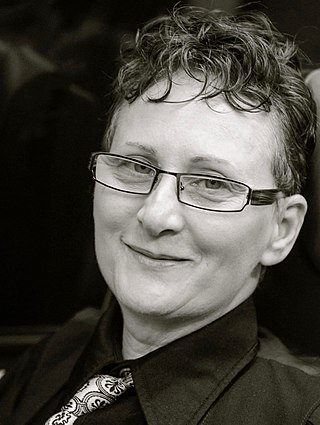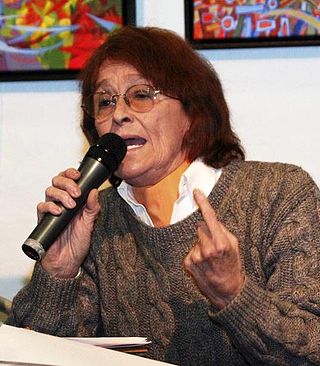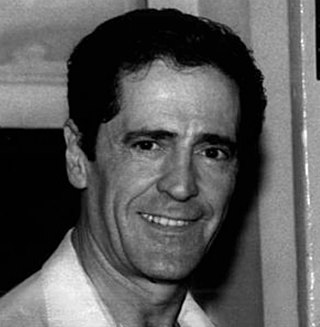Related Research Articles

Astor Pantaleón Piazzolla was an Argentine tango composer, bandoneon player, and arranger. His works revolutionized the traditional tango into a new style termed nuevo tango, incorporating elements from jazz and classical music. A virtuoso bandoneonist, he regularly performed his own compositions with a variety of ensembles. In 1992, American music critic Stephen Holden described Piazzolla as "the world's foremost composer of Tango music".

Tango is a partner dance and social dance that originated in the 1880s along the Río de la Plata, the natural border between Argentina and Uruguay. The tango was born in the impoverished port areas of these countries from a combination of Argentine Milonga, Spanish-Cuban Habanera, and Uruguayan Candombe celebrations. It was frequently practiced in the brothels and bars of ports, where business owners employed bands to entertain their patrons. It then spread to the rest of the world. Many variations of this dance currently exist around the world.
Nuevo tango is both a form of music in which new elements are incorporated into traditional tango music, and an evolution of tango dance that began to develop in the 1980s.

Susana Natividad Rinaldi was born on December 25, 1935, in Buenos Aires, Argentina. She is an Argentine tango singer better known as "La Tana." Her recognition is notable in various films, television appearances, theatrical performances, and in the music industry.

Argentine tango is a musical genre and accompanying social dance originating at the end of the 19th century in the suburbs of Buenos Aires. It typically has a 2
4 or 4
4 rhythmic time signature, and two or three parts repeating in patterns such as ABAB or ABCAC. Its lyrics are marked by nostalgia, sadness, and laments for lost love. The typical orchestra has several melodic instruments and is given a distinctive air by the bandoneon. It has continued to grow in popularity and spread internationally, adding modern elements without replacing the older ones. Among its leading figures are the singer and songwriter Carlos Gardel and composers/performers Francisco Canaro, Juan D'Arienzo, Carlos Di Sarli, Osvaldo Pugliese, and Ástor Piazzolla.

Tanghetto is an Argentinian neotango and electronic tango music project created and led by musician and producer Max Masri. Winner of the Gardel Award and four times nominated to the Latin Grammy Awards. It's based in Buenos Aires, Argentina.

"Objection (Tango)" is a song by Colombian singer-songwriter Shakira for her fifth studio album and first English-language album Laundry Service (2001). It was the first song Shakira wrote in English after being encouraged by American singer Gloria Estefan to record material in the language. She also produced the track along with Lester Mendez. "Objection (Tango)" musically combines elements of pop rock and tango, and contains instrumentation from the bandoneón and guitar. Through the lyrics of the song, Shakira aims to end a love triangle she is a part of. The song was released as the fourth single from the album on 24 May 2002. A Spanish version of the song, entitled "Te Aviso, Te Anuncio (Tango)" ("I'm Warning You, I'm Telling You"), was also recorded.
Ballroom tango is a ballroom dance that branched away from its original Argentine roots by allowing European, American, Hollywood, and competitive influences into the style and execution of the dance.

Pedro Florindo Sassone was an Argentinian violinist and composer, leader of his eponymous orchestra, which played tango music, from the 1940s up to the 1970s.

Gustavo Naveira is an Argentine tango dancer and teacher who contributed to the detailed analysis of the movements of dancing to Argentine tango.

Laurie L. Patton is an American academic, author, and poet who serves as the 17th president of Middlebury College.
Figures of Argentine tango are elements of Argentine tango.

Lexa Roséan, is an American writer, dancer and licensed psychoanalyst as well as a Wiccan high priestess in the neo-Gardnerian Minoan tradition. She lives in New York City.

Alcira Susana Argumedo was an Argentine sociologist, academic and was member of the Argentine Chamber of Deputies. She was nominated as a candidate for president on the Proyecto Sur ticket for the 2011 general elections.
Róbert Gulya is a Hungarian-British composer. He composes contemporary classical music as well as film scores.

Milonguero is a style of close-embrace tango dancing, the name coined by Susana Miller and Oscar "Cacho" Dante from the Argentine word "milonguero". Milonguero is a term for a skillful and respectful tango dancer who holds a reverence for the type of traditional social tango that is danced at milongas in Buenos Aires, Argentina. The two uses of the term do not coincide: many dancers who are considered to be milongueros do not dance milonguero-style tango.

A milonguero is a person who spends time dancing social tango. The word comes from the term milonga referring to a tango dance event.

Nelson Avila is an Argentine born dancer, choreographer, and instructor. He is widely recognized for his expertise and knowledge of all types of Argentine dance, including Argentine folk dances and Argentine tango. He was part of the original cast of Tango Argentino, and together with his partner Nélida, was one of only three couples to perform solo in the original production. Tango Argentino is viewed by many as the catalyst that began the 1985 revival of Argentine tango in Europe, North America and then spread throughout the world. As an original member of the cast, Nelson Avila was an integral part of that Tango Argentino revival. He has always been noted for his quick feet and athletic ability on the dance stage. Nelson is a member of Academia Nacional del Tango de la República Argentina and is recognized as an authority of tango dance, history, music, musicians and its many styles and interpretations.

Tango Argentino is a musical stage production about the history and many varieties of Argentine tango. It was created and directed by Hector Orezzoli and Claudio Segovia, and premiered at the Festival d'Automne in Paris in 1983 and on Broadway in New York in 1985. The Mel Howard production became a world-wide success with numerous tours culminating with a Broadway revival in 1999–2000. It set off a world-wide resurgence of tango, both as a social dance and as a musical genre. Tango Argentino recreates on stage the history of tango from its beginnings in 19th-century Buenos Aires through the tango's golden age of the 1940s and 50s up to Piazzolla's tangos. Most of the dancers in the show did their own choreography.
References
- ↑ "Tango "Godmother" Susana Miller Visits Emory Tangueros". The Emory Wheel . November 5, 2007. Archived from the original on 17 July 2011. Retrieved 24 November 2009.
- ↑ "Ballroom styles of Tango". Archived from the original on 3 March 2016. Retrieved 24 November 2009.
- ↑ "Tango Maven". The Georgia Straight . May 6, 2004. Retrieved 24 November 2009.